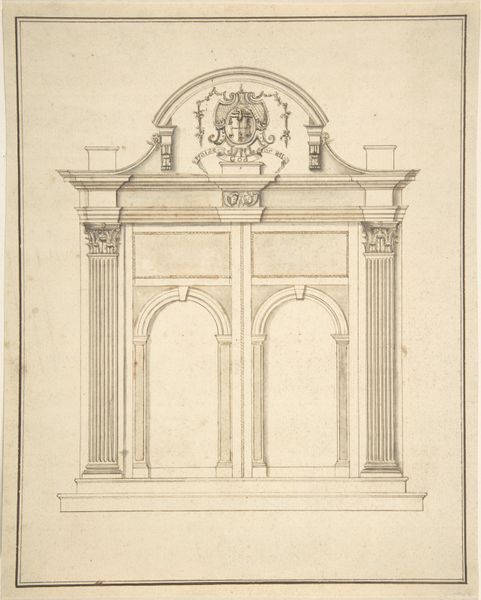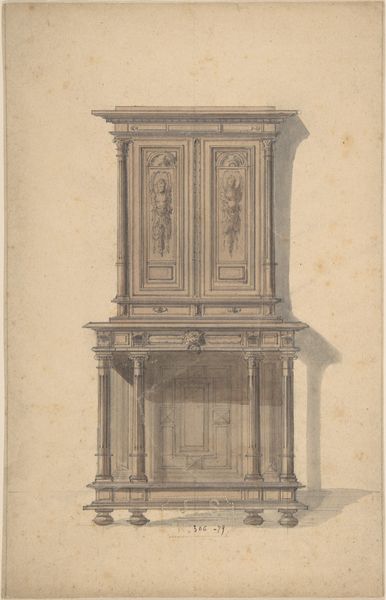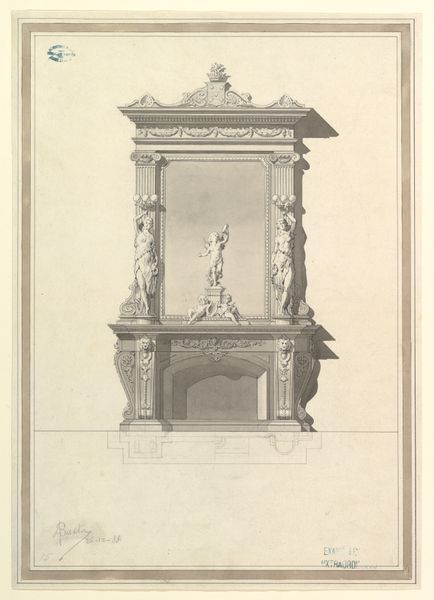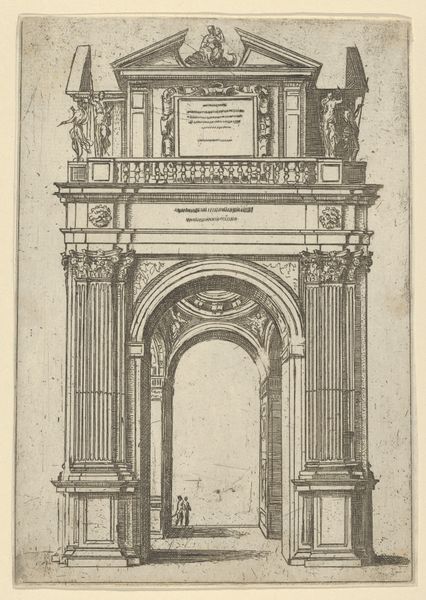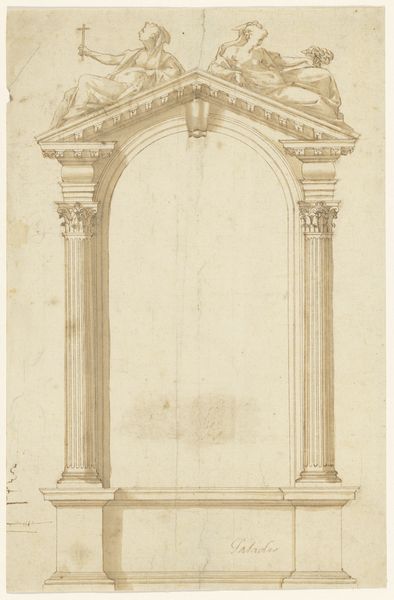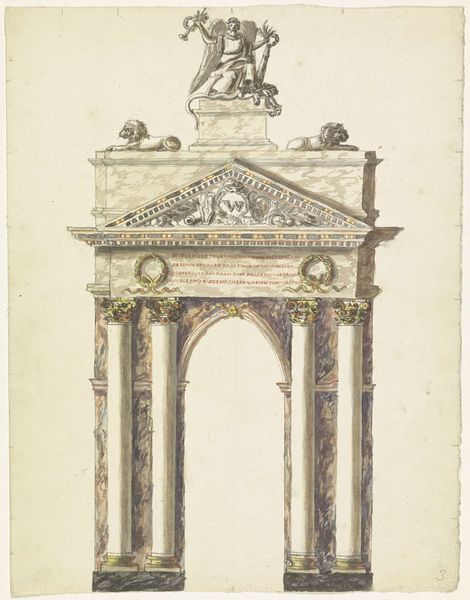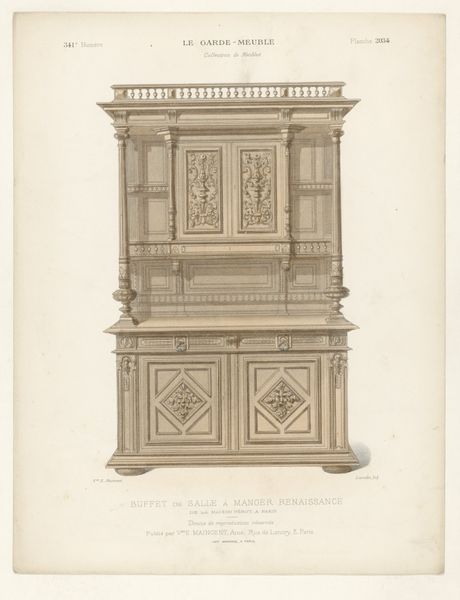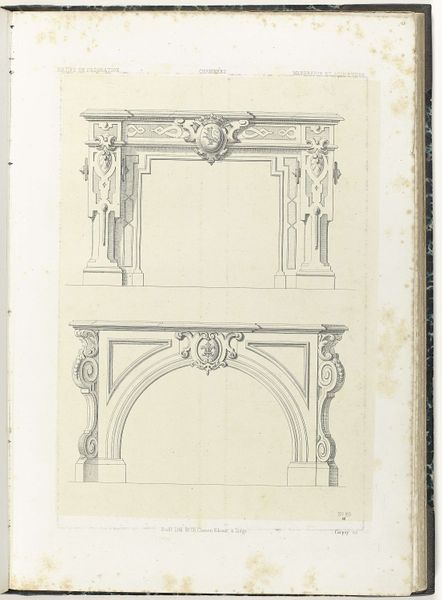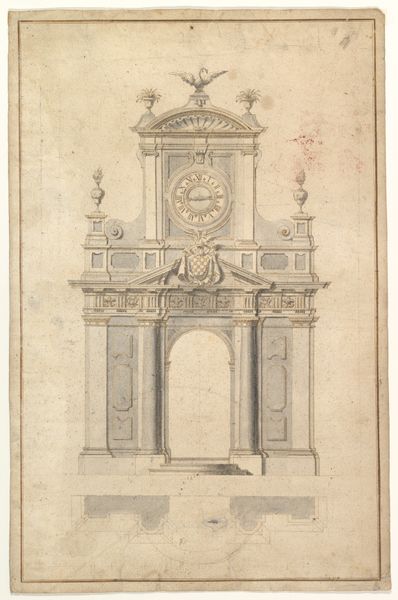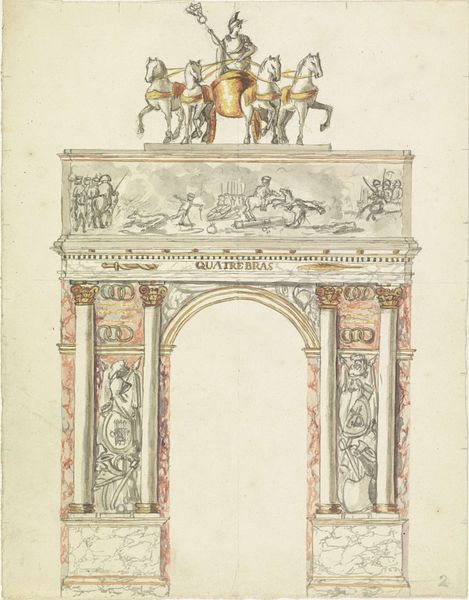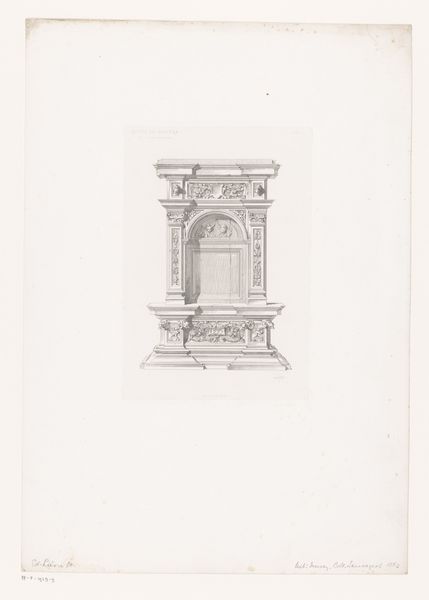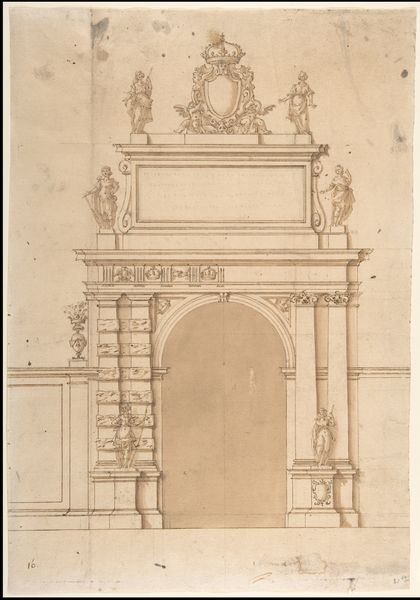
drawing, painting, print, watercolor, architecture
#
drawing
#
painting
# print
#
watercolor
#
coloured pencil
#
arch
#
men
#
academic-art
#
watercolor
#
architecture
#
realism
Dimensions: sheet: 10 5/8 x 7 1/2 in. (27 x 19.1 cm)
Copyright: Public Domain
Editor: Here we have a piece catalogued as "Monument of Richard Jervoice, 1563" created sometime between 1800 and 1900 by an anonymous artist, held here at the Met. It's a drawing done in watercolor and coloured pencil, showcasing an impressive arched structure. What strikes me most is how detailed the architectural elements are. What do you make of it? Curator: Well, given the materials and the historical setting depicted, it’s likely a later rendering, perhaps from the 19th century, of a 16th-century monument. This piece gives us insight into the cultural obsession with preserving and documenting history during the Victorian era. What statements were being made by re-interpreting older styles? Editor: I suppose the very act of re-drawing it elevates it to some degree? Demonstrates some significance of its existence. Was there a rise in architectural preservation at that time? Curator: Exactly! It speaks to the rising importance of historical preservation movements. Think about the role the Arts and Crafts movement played, alongside burgeoning photography, to archive our tangible heritage and cultural artifacts. Why use watercolor, a more 'delicate' medium for an architectural rendering? Editor: That’s interesting. Maybe watercolor provided an easier or quicker way to distribute architectural documentation at scale? Curator: Perhaps, although lithography and other printing methods would likely provide a more scalable medium. Watercolors evoke specific associations, that architectural blue for example. So, why represent architecture and lasting structures through media that are considered temporal or temporary? Editor: So the choice is possibly symbolic? Highlighting the ephemeral nature of even seemingly permanent structures and the act of preserving memories. I learned a lot; I hadn't considered how art can be used as historical documentation. Curator: And that documentation can in turn become a piece of art in itself. It brings light to questions of permanence and reminds us that all artistic choices are politically imbued decisions.
Comments
No comments
Be the first to comment and join the conversation on the ultimate creative platform.
